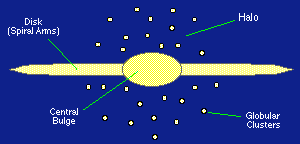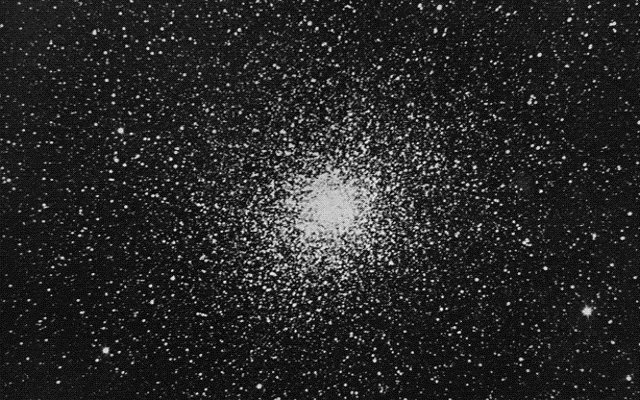
Globular Clusters-A Primer
When people ask me what my favorite deep sky objects are, I say "globular clusters, no question". More often than not, I'm met with a blank stare, if it's possible to see that in the dark. I suppose they were expecting something simple, like galaxies or nebulae. Most people have heard of these things, and so identify with them. Globulars however are outside the experience of the man on the street. So, here's a description of these wonderful objects, their nature, origins and evolution. Several sources are used, if not quoted, and my apologies to these.
Some time after the Big Bang, or actually a very long time after the Big Bang, the matter in the universe began to clump together, by virtue of its gravitational attractions. As the larger structures formed, namely the galaxies we see all around us, there was a certain amount of matter that clumped together around their edges. These coalesced to form the very dense patches of stars we call "Globular Clusters". These are roundish, large groups of stars that orbit each other and as a group orbit the galaxy. The term "globular" comes from the fact that they can not be resolved into individuals at the core by all but the largest telescopes. (As opposed to "Open cluster" which are easily resolved.) . They orbit our galaxy perhaps once every 250 million years. Since they formed along with the galaxy, they contain in theory, the oldest stars in the galaxy. (Evidence is emerging that this is not always the case, however, as careful studies of the globular M80 in Scorpius is showing. More on this later.)

Careful observation of a globular can indeed reveal a large number of older, red stars in most clusters. These stars are generally clumped around the center of the cluster, with gradually less around the edges. The appearance of clusters fall into two basic types-those that appear very dense and those that are a bit looser. This difference depends on the mass of the cluster as a whole, the distance to galactic center and how it interacts with the galactic core as it orbits. There was a wonderful article in Sky and Telescope's October 1998 issue entitled "Why Globular Star Clusters Evaporate" that describes this in detail. In essence, the article says that if the mass is high enough, the core of the globular will collapse upon encountering the galactic core, making it denser. This in turn causes stars at the core to collide, pumping energy into the cluster and bringing about new star formation around the edges. This is seemingly confirmed in the appearance of clusters such as M80, mentioned earlier. The other scenario is with a lower mass cluster. When these encounter the galactic core, their outer stars are stripped off by the gravitational attraction and their center of mass moves outward, resulting in a less dense cluster. M5 may be an example of this type of globular.
Because of their distances, on the order of tens of thousands of light years,
they most times appear very faint. There are exceptions, though. M13, M4, NGC 5139
aka Omega Centauri, and 47 Tucanae are very bright for globulars. I regularly show these
at public star parties, from school playgrounds and light polluted parking lots, (except
for 47 Tuc, since it's in the Southern Hemisphere). If Earth orbited a sun in a globular
cluster however, we would most likely not know what a dark sky at night would look like.
For example, M22 pictured here measures 110 light years across, and contains approximately
70,000 stars. The same area around our sun contains less than 500. Do the math, and you come
up with a star no matter which way you look!

Globular clusters contain very old stars. Because of this, there are a number of them that also contain planetary nebulae. Most of these are small, faint and generally lost amid the foreground stars, but can be fun to hunt down, if you have a dark sky site, good telescope and better charts. :-)
 Page URL: http://www.stonehavenobservatory.com/GCTutorial.html
Page URL: http://www.stonehavenobservatory.com/GCTutorial.html
Copyright 1999, Steve Dodder
Webmaster: Steve Dodder
Revised: 8/26/10